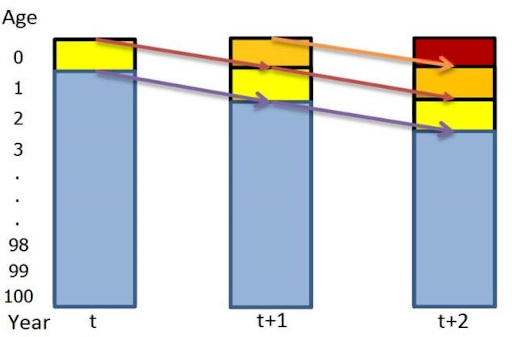Assessment Based National Dialogue
SPF Good Practices Guide
Module 12
Objectives
This module explains how to obtain input data (related to population, labour market, macroeconomics, general government operations) and fill the POP, EAP, ECO and GGO worksheets of the RAP. These worksheets are identified by their blue colour, and include historical and projected data. In a country, historical data may be available at several sources, but projections may have to be made by users. The module also includes hands-on exercises to practice filling of input RAP worksheets.
Key questions
- What is the structure of the ILO RAP model?
- What are the main sources of historical data and projections?
- Dealing with POP:
- How to project the population?
- How to calculate survivors, newborns and migrant population?
- Dealing with EAP and LPR/AR:
- What are the parameters of the labour market?
- How to project labour market data and unemployment rate?
- Dealing with ECO:
- How to project GDP and the GDP deflator?
- Hands-on exercises
Takeaway message
To fill in the POP, EAP, ECO, and GGO worksheets of the RAP model, it is necessary to collect historical data on population, labour force participation rate and EAP, employed and unemployed persons, unemployment rate, GDP at constant and current prices, productivity, consumer price index, and so on. It is also necessary to get projections for this data or make the projections, if the available data is unavailable or unreliable. It is important to understand the indicators and their interrelationships, in order to be able to collect and project the data, and check its coherence.
Resources
- Master module 12 - Understanding how to input data into the RAP worksheets (advanced session)
- Presentation - Advanced Session on using the RAP
- Instruction sheet - Hands-on advanced RAP exercises
- Exercises and solutions
Cohort component method to project population data
